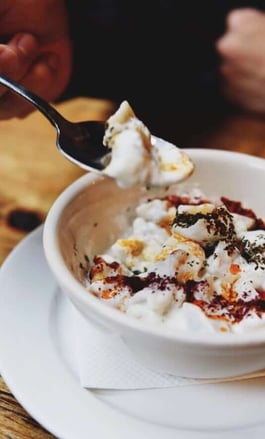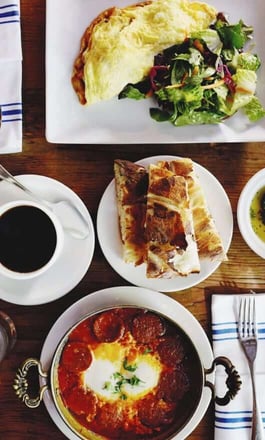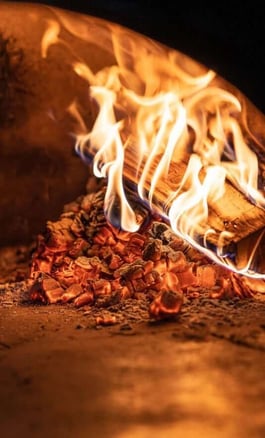Tagine: The Dish
For an aromatic and succulent stew, consider the Moroccan dish known as a tagine. Developed by the Berbers of North Africa, tagines are traditionally prepared by slowly cooking the ingredients over hot coals. The tagine is named after the clay pot in which the stew cooks. Tagines are hearty and weave an enticing tapestry of flavors that define Moroccan cuisine.
A tagine, the cooking vessel, is an earthenware pot that is made up of two parts. The lower component is a round, shallow cooking dish into which the stew’s ingredients are placed. This dish is then covered with the second component, which is a large, dome-shaped lid. The conical shape of the lid is designed to keep the stew moist. Steam from the simmering ingredients rises to form condensation on the wall of the lid, which then drips and rolls back into the stew. Developed in communities where water was not always readily available, this cooking method allows for a stew that requires minimal liquid added to the pot. The result is tagine, the dish. The tagine stew is moist and tender, and the flavors have melded together beautifully.
There are hundreds of different renditions of tagine recipes that have been conjured in Moroccan households through many generations. The traditional ingredient list of a tagine starts with a protein source, such as chicken, lamb, beef or fish. Meatless variations may also be created with vegetables and legumes. Tagines also include garlic and onions. Vegetables, such as carrots, eggplant, potatoes, sun-dried tomatoes or squash, may also be cooked with the meat, poultry or fish. A combination of spices is used to season the dish. Some of the typical spices used in tagines include saffron, ginger, cumin, paprika, cinnamon and turmeric. Herbs, such as cilantro and parsley, may also be used to infuse flavor.
Many tagines include fruits, such as preserved lemons, dates, mango, prunes or dried apricots, which add a facet of mild sweetness to the stew. Additional ingredients that are often embraced as part of the tagine ingredient repertoire include olives or nuts for added earthiness or crunch. Once a tagine’s ingredients are placed in the pot, the tagine is set over hot coals to cook over a span of several hours. As the stew cooks, the savory fragrances permeate the air to tantalize appetites and heighten the anticipation of a satisfying meal.
The cooked tagine is served from the very pot that it cooked in. Couscous, another Moroccan staple, is most commonly paired with tagine to round out the entrée. Some popular tagines include chicken with lemons and olives, lamb with apricots, beef with carrots and olives, root vegetables with olives and chickpeas, chicken with mango and lamb with prunes and almonds.
Tagines may easily be created in today’s home kitchens. Tagine cookware is available in enamel-coated, cast iron, which can withstand cooking on stovetops and in conventional ovens. Traditional clay tagines may also be used with a heat diffuser placed between the stovetop and the pot to prevent the tagine from cracking and to evenly distribute the heat from the stove’s burner. A heavy Dutch oven can be used in place of a tagine. The stew can be cooked on the stove at a low and gentle simmer or in the oven at a low temperature setting. By using these methods, the tagine is usually cooked and ready to serve in one to two hours, depending on the recipe and cooking method used.
Next time there is a chill in the air, turn to a satisfying and healthy meal that is packed with flavors and textures. Bring the warmth of North Africa to the table by presenting a comforting Moroccan tagine.






